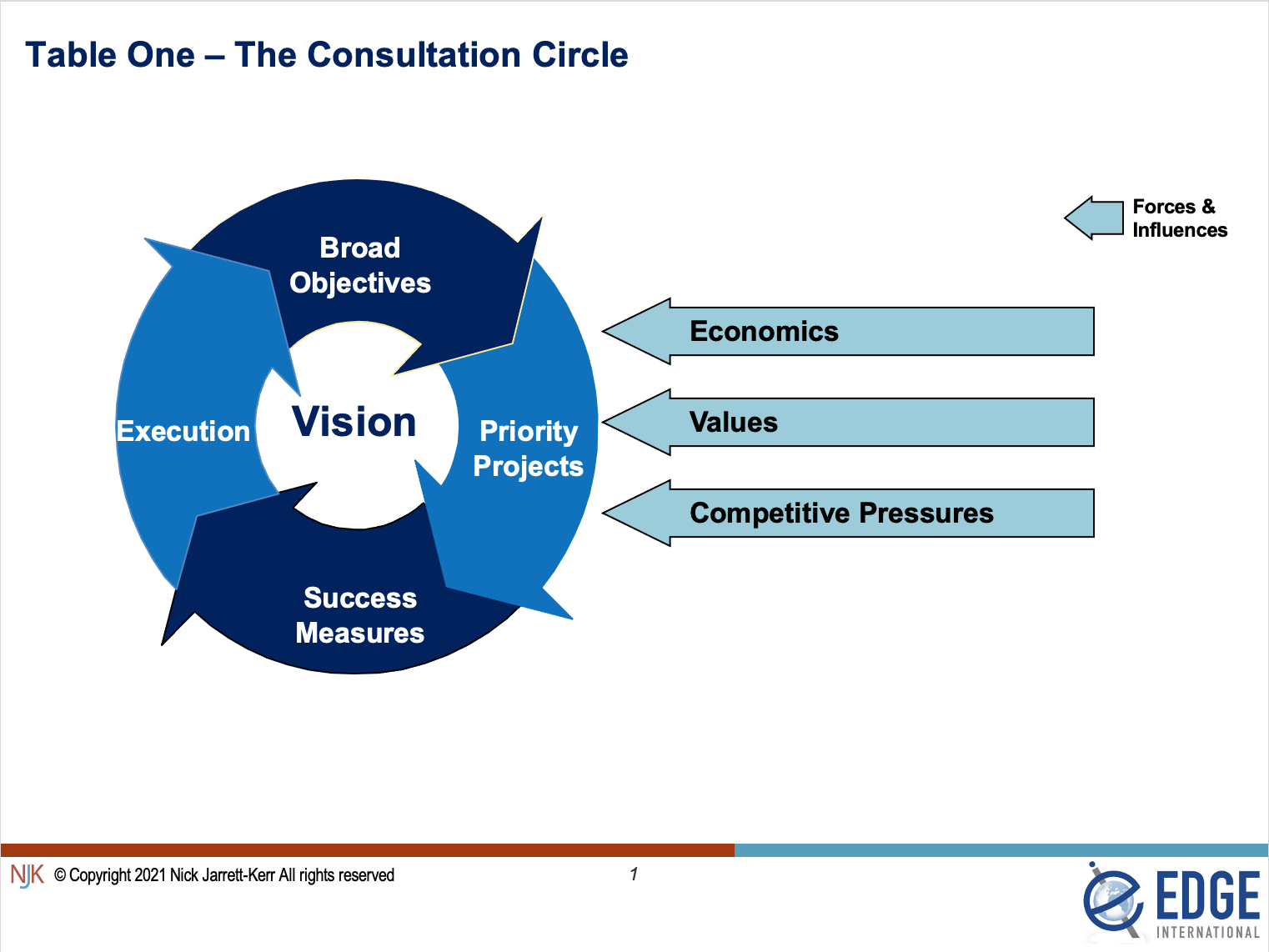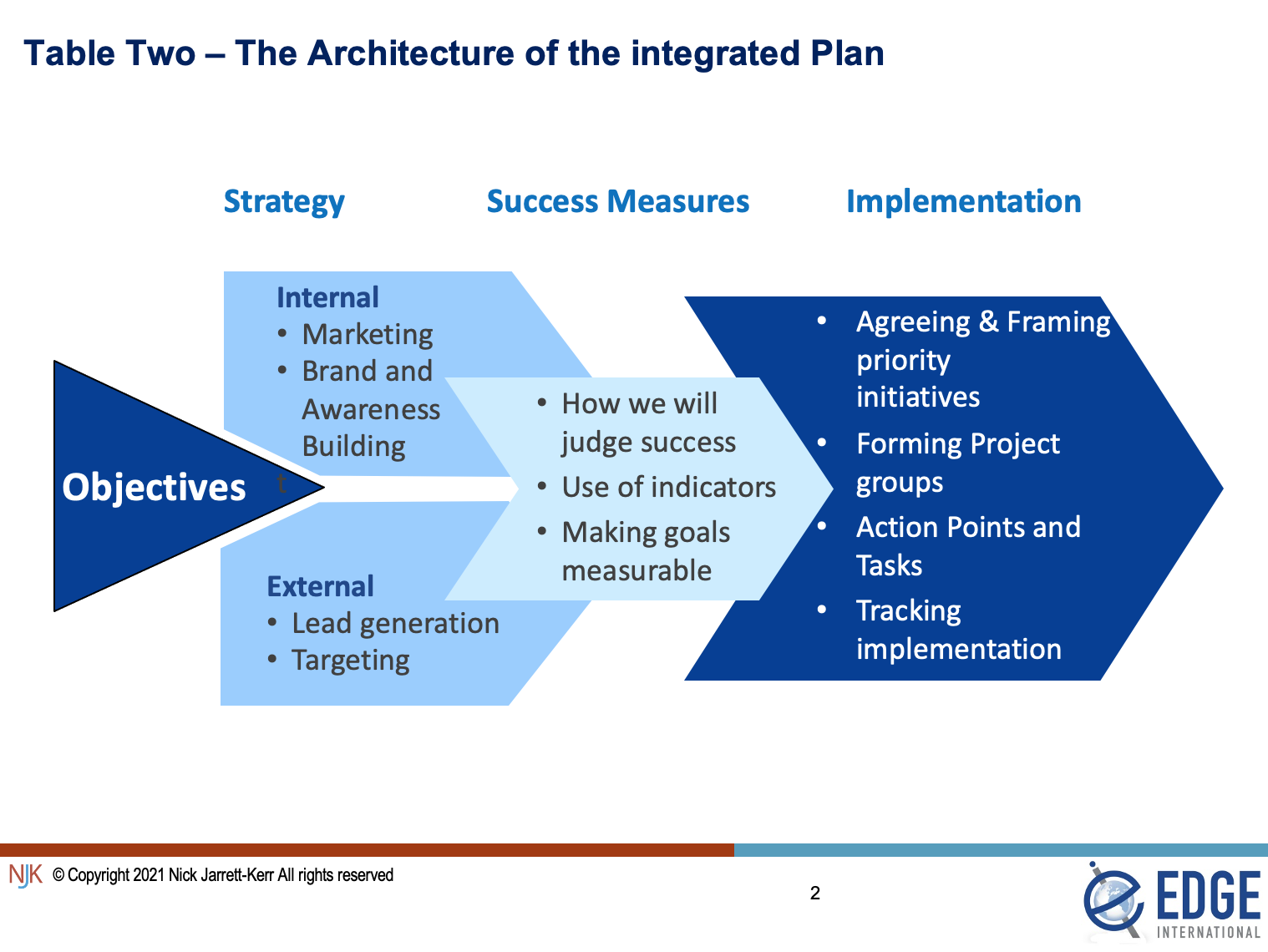Integrating Strategic Planning and Strategy Execution


Professional service firms are typically littered with uncompleted strategic projects, failed initiatives and strategic plans that have remained in a drawer (or a computer file) almost as soon as written. It has often been observed that professionals are better at ideas and planning than in putting those plans into reality by means of effective implementation. To state the rather obvious, any yawning gap between strategic planning and its implementation is a mistake. The job is not done when the firm has produced a finely honed strategic document, beautifully printed and glossily bound – however wide and comprehensive has been the consultation process. The danger comes from a mindset that assumes that the plan is a lofty leadership endeavour and that implementation is low-level operational stuff that can and should be delegated.
Strategic planning and strategy execution are best seen as an integrated and iterative process in which the broader and more visionary aspects are then cascaded down into action throughout the firm. In corporations, the leaders of the company for the most part craft the strategic choices involving larger long-term investments, and then tend to cascade the more concrete, day-to-day decisions down the hierarchical structure. Professional service firms (except the very large ones) tend to be smaller and less hierarchically layered than larger corporations but the same thinking applies to firms of all sizes; that the leaders should first agree and set out a broad path and vision which will hopefully stimulate the action that should follow lower down the organisation. The cascade imagery is helpful to a point but still has overtones of a hierarchical delegation. I prefer the imagery of a closed loop approach (such as illustrated in Table One) which stresses the collaborative aspects of strategic planning without which lawyers at the coal face will not take responsibility or ownership. It achieves this by facilitating an information consultation and feedback feature that enables plans to be checked and adjusted in the light of experience and outcomes. In this approach, rather like a ball being tossed and caught back and forth, or round and round, the purpose is to give all the participants in the process the opportunity, at each level, to help decide the implementation steps (and the accountability for these steps) to achieve each strategic priority project, and the accompanying success measures. This process of circling back is particularly important where there might be problems in capability or capacity (human or financial), and to establish what resources are be available and what commitments need to be made to address the execution of any plan that is agreed. All the time during this consultation phase, other forces and influences will arise to inform the discussions and processes – the firm’s financial health, the values the firm espouses and the competitive pressures that the firm faces being some of those.
After this process has been concluded, it is then possible (as illustrated in Table Two) to design and build a truly integrated plan that links all the essential moving parts and introduces lines of accountability and feedback. At this stage the broad path can be fleshed out with more detailed projects, timelines and actions. The magnitude of the current challenges to the professional service sector cannot be understated. If Table One is seen as a spinning wheel, then it needs to spin ever more speedily.




